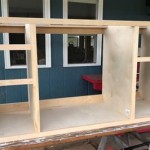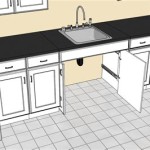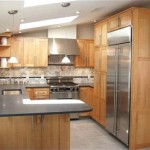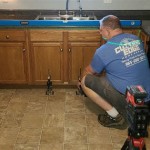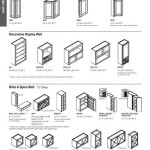Kitchen Cabinet Hanger Brackets: Securing Your Investment
Kitchen cabinets represent a significant investment in any home. Their functionality and aesthetic appeal contribute substantially to the value and usability of the space. Ensuring these cabinets are securely mounted is paramount, not only for safety but also for the longevity of the cabinetry itself. Kitchen cabinet hanger brackets play a critical role in this process, providing the necessary support and connection to the wall.
This article delves into the specifics of kitchen cabinet hanger brackets, exploring their types, selection criteria, installation considerations, and the importance of choosing the right hardware for the job. Understanding these aspects can empower homeowners and professionals alike to make informed decisions that guarantee a stable and secure kitchen cabinet installation.
Understanding the Function of Kitchen Cabinet Hanger Brackets
Kitchen cabinet hanger brackets, often referred to simply as cabinet hangers or mounting brackets, are specifically designed to bear the weight of upper (wall-mounted) kitchen cabinets. They act as a crucial intermediary between the cabinet carcass and the wall studs or other structurally sound mounting surfaces. Without these brackets, relying solely on screws driven directly into the cabinet back would lead to an unstable and potentially dangerous installation. The weight of the cabinet, compounded by the contents within, would eventually stress the screws and the cabinet material, leading to sagging, detachment, and potential failure. Hanger brackets distribute the load across a wider area of the wall, greatly increasing the weight-bearing capacity of the installation.
The design of these brackets typically incorporates features such as multiple screw holes for secure attachment to both the cabinet and the wall. Some designs also offer adjustable features, allowing for fine-tuning of the cabinet's position during installation. This adjustability is particularly valuable when dealing with minor imperfections in wall straightness or cabinet levelness. The selection of the appropriate hanger bracket is directly related to the size, weight, and intended use of the cabinet. Heavier cabinets, those containing dense materials like dishes or appliances, require more robust brackets.
Beyond the basic weight-bearing function, some hanger brackets also contribute to the overall aesthetic appeal of the installation. Concealed brackets, for example, are designed to be invisible from the exterior of the cabinet, providing a clean and seamless look. This is often a preferred choice in modern kitchen designs where a minimalist aesthetic is desired.
Types of Kitchen Cabinet Hanger Brackets
The market offers a diverse range of kitchen cabinet hanger brackets, each with unique characteristics and suitability for different applications. Understanding these distinctions is crucial for selecting the right bracket for a particular project. The following are some of the most common types:
L-Shaped Brackets: These are perhaps the simplest and most common type of cabinet hanger brackets. They consist of two perpendicular metal plates, one for attaching to the cabinet interior and the other for attaching to the wall. They are relatively inexpensive and easy to install. However, they may not offer the same level of weight-bearing capacity as more sophisticated designs. L-shaped brackets are typically used for lighter cabinets or in installations where additional support is provided by other means.
I-Beam Brackets: These brackets feature a central vertical web connecting two horizontal flanges, resembling the shape of an I-beam. This design provides enhanced strength and rigidity, making them suitable for heavier cabinets. I-beam brackets often have multiple screw holes and may be adjustable, allowing for precise alignment of the cabinets.
French Cleat Systems: A French cleat is a type of hanging system that uses two interlocking pieces of wood or metal. One piece is attached to the cabinet, angled downward, and the other piece is attached to the wall, angled upward. The cabinet is then hung by sliding the two pieces together. French cleats offer exceptional strength and ease of installation, as the cabinet can be easily lifted and positioned onto the cleat. They also provide a degree of adjustability, allowing for minor corrections in alignment.
Concealed Hanger Brackets: These brackets are designed to be completely hidden from view after installation. They typically consist of a metal plate that is recessed into the cabinet back and a corresponding bracket that is mounted on the wall. Concealed hangers often incorporate adjustable mechanisms that allow for precise leveling and alignment of the cabinets. These brackets provide a clean and modern look, but they require more precise installation and may be more expensive than other options.
Adjustable Hanger Brackets: These brackets incorporate mechanisms that allow for vertical and sometimes horizontal adjustment of the cabinet after it is mounted. This is particularly useful for compensating for uneven walls or floors. Adjustable hangers can be a valuable asset in ensuring a professional-looking installation.
The choice of bracket type should be based on factors such as the weight of the cabinet, the type of wall construction, the desired aesthetic, and the installer's skill level.
Key Considerations When Selecting and Installing Hanger Brackets
Selecting and installing the correct kitchen cabinet hanger brackets is crucial for a safe and functionally sound kitchen. Several key factors need careful consideration during this process.
Weight Capacity: Determining the weight of the fully loaded cabinet is paramount. This involves estimating the weight of the cabinet carcass itself, as well as the anticipated weight of the contents it will hold. The selected hanger bracket must have a weight capacity that exceeds this estimate by a significant margin, typically at least 20-30%, to provide a safety factor. Exceeding the bracket's weight capacity can lead to failure and potential damage or injury. Manufacturer specifications clearly indicate the maximum load-bearing capacity for each bracket.
Wall Construction: The type of wall construction significantly impacts the choice of mounting hardware. Drywall, for example, offers limited support when directly screwed into. In this case, it's essential to locate and attach the brackets directly to wall studs. If studs are not available in the desired location, specialized drywall anchors designed for heavy loads must be used. Concrete or masonry walls require the use of appropriate anchors and fasteners designed for these materials. Failing to use the correct fasteners for the wall type will compromise the integrity of the installation.
Cabinet Material: The material of the cabinet carcass itself also plays a role in bracket selection. Particleboard or MDF cabinets may require specialized screws or reinforcement to ensure a secure connection to the bracket. Solid wood cabinets generally offer a stronger and more reliable surface for screw attachment. Pre-drilling pilot holes is often recommended, especially when working with hardwoods or brittle materials, to prevent splitting or cracking.
Bracket Placement: The placement of the hanger brackets is critical for even weight distribution. Brackets should be positioned near the top of the cabinet, as this provides the strongest support against tipping. The number of brackets required depends on the width and weight of the cabinet. Wider cabinets generally require more brackets to prevent sagging. It's also essential to ensure that the brackets are evenly spaced to distribute the load uniformly. Consulting with a professional installer or referring to manufacturer guidelines can help determine the optimal bracket placement.
Installation Technique: Proper installation technique is crucial for ensuring the long-term stability of the cabinets. This includes using the correct size and type of screws, ensuring that the screws are driven straight and securely into the cabinet material and wall studs or anchors, and verifying that the cabinets are level and plumb after installation. Using a level and plumb bob is essential for achieving a professional-looking and functional installation. It is also advisable to double-check all connections to ensure they are tight and secure.
By carefully considering these factors, homeowners and professionals can ensure that their kitchen cabinets are securely and safely mounted, providing years of reliable service.
In conclusion, the selection and installation of kitchen cabinet hanger brackets are critical aspects of kitchen renovation or construction. By understanding the different types of brackets available, considering the specific requirements of the project, and adhering to proper installation techniques, individuals can achieve a secure and aesthetically pleasing cabinet installation.

Hanging Bracket Wall Hanger Plate 63mm Kitchen Cabinet Cupboard Mounting Overhead 150kg Load Capacity Fixing King

Hafele Nylon Cabinet Bracket Plate Toolstation

Wickes Cabinet Hanging Bracket And Plate 59 X 50mm 10 Pack Co

Kitchen Cabinet Wall Mounting Brackets Jet Press

X2 Koala Cabinet Hangers Spider Concealed Dowels Mounting 29036910

Hafele Spider Concealed Wall Hanger Brackets Set Debonair Joinery S

Heavy Duty Wall Cabinet Mounting Adjustable Brackets Hangers Debonair Joinery S

Koala Concealed Cabinet Hanger Fix Zinc Steel Pair

Wall Hanging Bracket Hanger Plate For Kitchen Cabinet Cupboard China Plastic Made In Com

Nylon Cabinet Hanging Bracket With Mounting Plate Pack Of 2 Ray Grahams Diy
Related Posts

